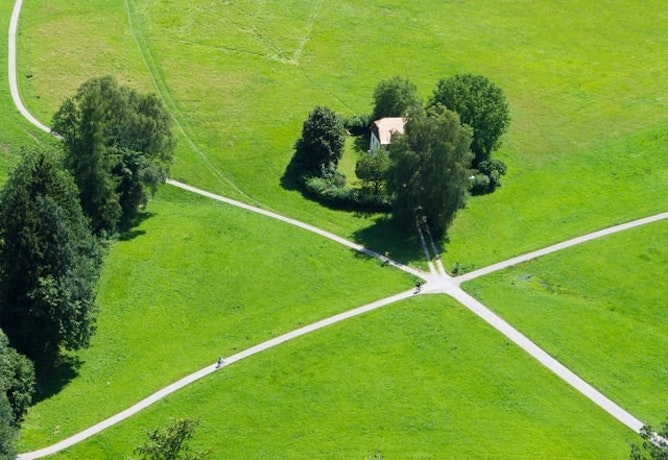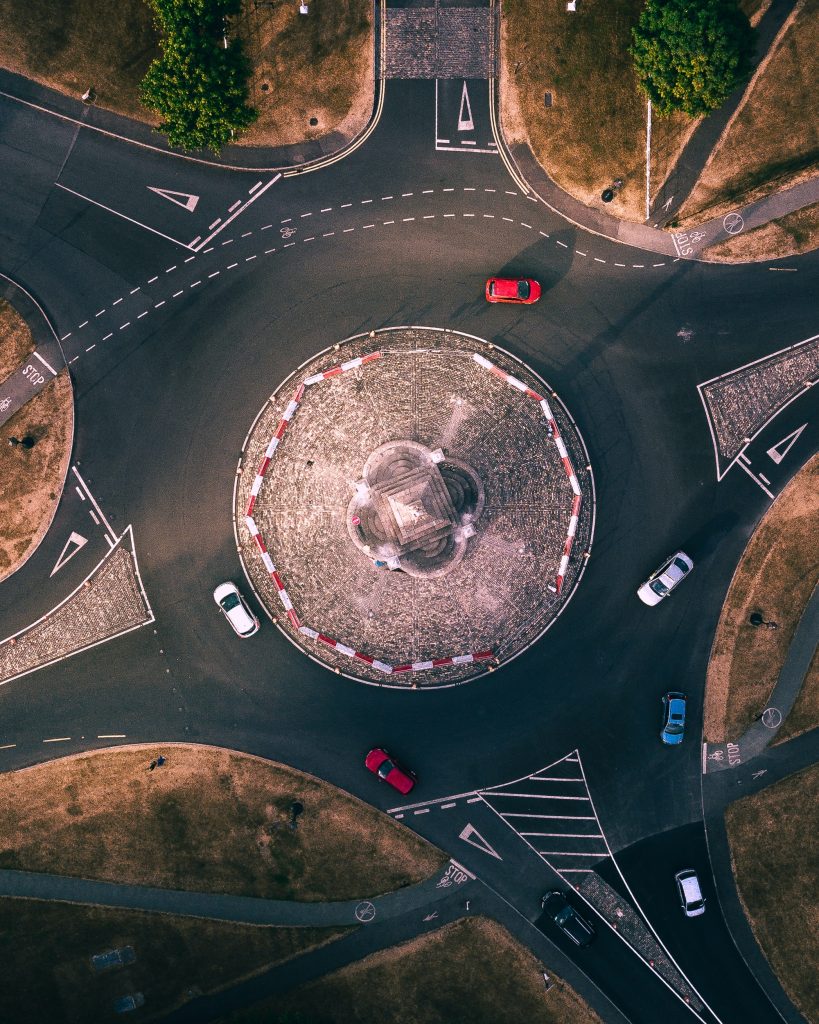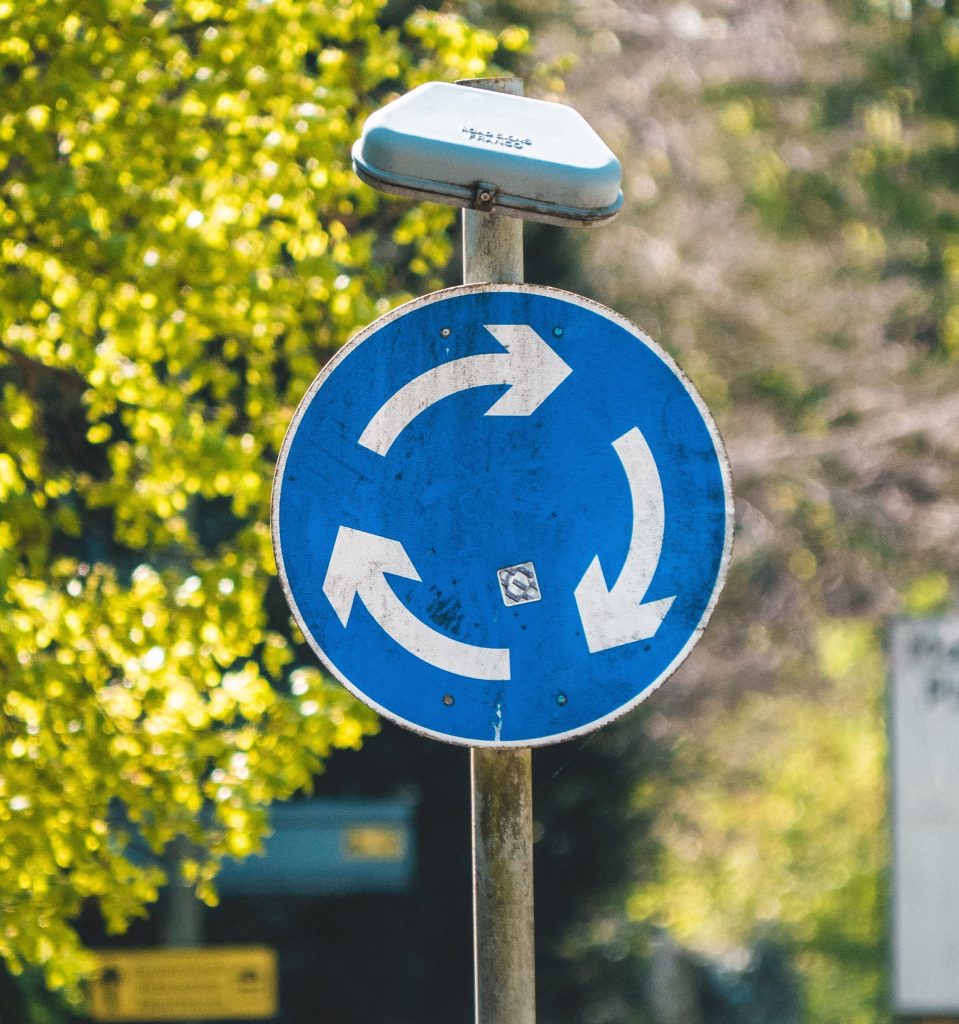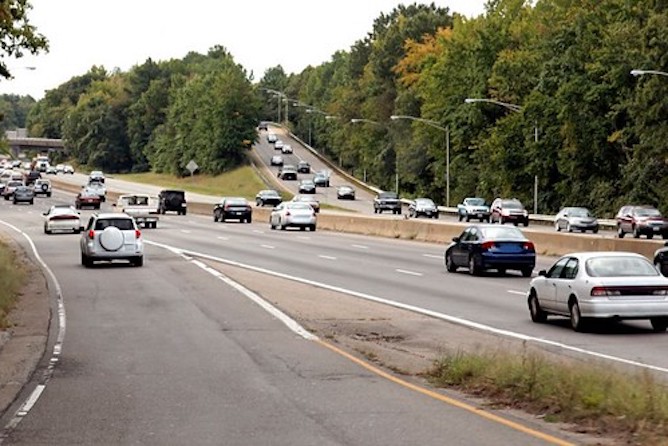Sharing the road is like sharing toys when you’re little. It won’t always seem fair, but there are overarching ideals dictating the best way to behave. Nowhere is this more evident than when roads intersect and form junctions. Sometimes you’ll need to wait for other vehicles to go first at junctions, and other times they’ll have to wait for you.
But it’s not usually just a random, take-turns-and-hope-for-the-best approach. So, how do you know who has priority? Here we’ll dig into into the right of way rules and show you how to apply them in real life scenarios.
What is the main rule for right of way?

In the UK, there are a couple of main principles for working out who has right of way:
– Drivers on a main road have priority over drivers on a minor road
– Vehicles travelling straight on or turning left have priority. That means that drivers turning right will have to wait for a gap in the traffic before making their turn
Both rules apply simultaneously, so there are a few factors to consider when you find yourself at a junction. Let’s see how they play out.
Who has the right of way at T-junctions?
A T-junction is where two roads meet and form a ‘T’ shape. One road will always be dominant, or more ‘major’, than the other. So, first you need to work out whether you’re driving along the main road or the minor road.
How to tell if you’re on the main or minor road
If your road is the one that continues without interruption, you’re driving along the main road. If your road is coming to an end, and you have to choose between turning left or right, then you’re on the minor road.
Travelling on the main road
Remember, according to our two rules, you have priority over traffic joining your road. But if you want to turn right at the T-junction, you will have to give way to oncoming traffic.
You also need to look out for vehicles emerging from minor roads. If a car has just pulled out in front of you, they may take a bit of time to get up to speed. Although it’s your right of way, you also have a responsibility to drive carefully and attentively. Don’t go and drive up their boot is all we’re saying—even if you think they deserve it.
Emerging from the minor road
Here, you don’t have right of way at the junction. Whichever way you’re turning, you’ll have to wait for a gap in the traffic before you pull out. As you approach a T-junction, there will usually be a ‘Give Way’ or ‘Stop’ sign, as well as road markings. These should all remind you that you don’t have priority.
Key points
Main road
– You usually have right of way—but not if you’re turning right
– Look out for vehicles emerging from T-junctions on the left or right
– Be prepared to slow down if someone has just pulled out in front of you
Minor Road
– Give way to traffic on the main road
– Pull out when there’s a sufficient gap in traffic
– Quickly get your speed up to that of traffic travelling on the main road
Who has priority at crossroads?
We know four-way intersections as crossroads in the UK. There are a few different types, but what they all have in common is that there’s the potential for traffic to be moving in four different directions all at once.
Controlled crossroads

To avoid chaos, some bigger crossroads are controlled by traffic lights, which, providing you have a good grasp of the rules, means everyone knows where they stand. It’s your turn to go when you’ve got a green light.
Turning right at a crossroads with traffic lights
Things get a little more complicated if you’re turning right. Even if you have a green light, you don’t have priority unless you’ve got a lit up filter arrow. Otherwise, you’ll have to wait for a gap in oncoming traffic before you start your turn.
Marked crossroads
For less busy crossroads, there will usually be road markings and signs that tell you who has priority. Crossroads tend to consist of one major road, with two minor roads joining it from opposite directions.
Travelling on the main road
Vehicles travelling straight on along the main road, or turning left from the main road to a minor road have priority.
But, just like before, when turning right onto a minor road, you need to yield to oncoming traffic. The best way to do this safely, as well as performing your usual mirror checks and sticking your right indicator on, is to get yourself into a good road position. That way, your intentions are clear to other road users, and traffic behind may be able to undertake you while you wait for a suitable opportunity to turn.
Emerging from a minor road
When emerging from a minor road at a marked crossroads, you must always give way to traffic on the main road. Wait until there’s enough space for you to pull out safely.
Priority over the opposite minor road
Unlike at a T-junction, you have to consider drivers emerging from the opposite minor road at a crossroads. Whose right of way it is depends on which way you’re each trying to go.
– You want to turn left or head straight on: you have priority. Remain vigilant, because not all drivers abide by this rule, and may end up cutting across you.
– You are both turning right: nobody has right of way. Try to establish eye contact with the driver opposite to decide who should go first.
Unmarked crossroads

Don’t panic when you hear the term “unmarked crossroads”. Although, technically, nobody has priority, you should be able to navigate them safely if you fall back on your knowledge of other junctions and general rules of the road.
– The first person to arrive at the junction usually has right of way
– If you’re turning right, you should give way to other traffic
It’s really important that you keep your wits about you at unmarked crossroads. The best thing you can do is to establish eye contact with other drivers in order to double check their intentions.
Key points:
– Follow any road markings, signs and traffic signals
– Where markings aren’t clear, proceed with caution
– Give way to traffic on the main road
– Any time you’re turning right, yield to other drivers
Who has right of way at a roundabout?

Roundabouts are a type of junction that help to keep vehicles safe and moving at busy intersections. They’re really common in Britain, and there are quite a few different types you need to be aware of. But, whatever the layout, there’s a simple rule for working out who has priority at a roundabout: on your approach, you must give way to drivers already on the roundabout.
Since we drive in a clockwise direction around roundabouts in the UK, that means you should always give way to traffic coming from your right.
Usually, you should give way to any traffic that has rounded the corner towards you, regardless of which lane they are in, because they might switch lanes at any time.
Only enter the roundabout when you can do so without causing other drivers to brake. You’ll get better at judging this with practice. Look at:
– How close they are to you
– Signals—like indicators, lane and road position—that they are planning to exit the roundabout before they reach you
– Their speed
Once you’re on the roundabout, you don’t usually have to give way to anyone else. But, occasionally, there might be road markings and signs indicating otherwise—so keep your eyes peeled just in case.
Who has priority at mini-roundabouts?

Whatever the size of roundabout, it’s the same deal. At mini roundabouts, give way to anybody already going around it. But because of your close proximity to other drivers, you also need to yield anyone about to enter the roundabout from your immediate right.
Where there are drivers at all entrances, nobody has priority. Eye contact and caution are what you need here. Try to work out each other’s intentions, but be willing to stop if you misread the signs.
Traffic lights at roundabouts
Sometimes bigger roundabouts are controlled by traffic lights. They might not always be in use; some only work at busy times of day.
If your junction onto the roundabout has its own set of working traffic lights, you just need to obey the traffic light rules. They will filter you onto and across the roundabout, and you’ll automatically give way to other traffic when you stop at a red light.
Left lane filters
On some roundabouts, you might come across a left filter lane. This helps left-turning traffic keep on the move, even when other routes are busy. Where there is a filter lane, there’ll be a road sign showing you it as you approach the roundabout. By getting into the left hand lane, you’ll be able to carry on driving and bypass the actual junction.
You don’t need to give way to traffic on the roundabout, since you’re separated from those drivers, often by white road hatchings.
Key points:
– Give way to traffic already on the roundabout coming from the right
– Remember to check to your left as well, in case traffic has come to a stop or is slower than you anticipate
– Proceed with caution; drivers are often lazy when it comes to indicating at roundabouts
– Obey all road signals and markings as normal
Merging from slip roads

Image source: © State Farm (CC BY 2.0)
Slip roads can be a bit of a daunting junction to navigate, because you’re merging sideways and want to keep moving if possible, but you don’t have right of way. Use your mirrors and check your blind spot over your shoulder to see when you can go. Traffic travelling along the road you’re joining has priority (remember, that’s the main road).
If it’s appropriate, vehicles will hopefully change lanes, slow down or speed up, so that you can join the road without having to come to a standstill.
However, they may not be able to let you in because of traffic conditions—or might not think to do so, if they aren’t a considerate driver. Even as you focus to your right hand side, keep track of where you are along the slip road, so that you have space to stop if need be.
Key points:
– Check your mirrors and your blind spot
– Never assume that a driver will let you in
– Choose a speed that’s appropriate both for the road you’re joining, and the state of the traffic on that road
